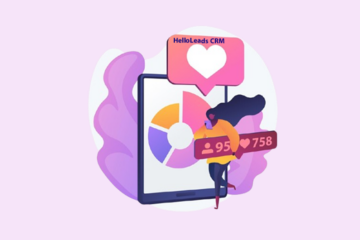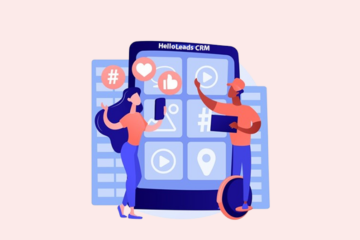
“The integration of CRM data with Facebook Ads is a game-changer for personalized marketing strategies.” – Jane Doe, Digital Marketing Expert
In today’s crowded digital marketplace, attracting and retaining customers requires a tailored strategy. With countless ads competing for attention, generic messages are no longer effective. That’s where the integration of CRM data and Facebook Ads comes into play, offering a solution that resonates on a personal level.
By harnessing the rich insights from your customer relationship management system, you can create Facebook ad campaigns that feel uniquely tailored to each individual. Imagine delivering marketing messages so precisely targeted that they resonate deeply with your audience. This level of personalization can dramatically boost engagement, conversions, and customer loyalty.
In this blog, let’s explore how to leverage CRM data to craft Facebook ads that truly connect with your customers.
Understanding the power duo: Facebook ads and CRM data
Facebook Ads: Offers a vast audience reach, precise targeting options, and robust performance metrics.
CRM Data: Provides a treasure trove of customer insights, including demographics, purchase history, preferences, and engagement behavior.
When combined effectively, these two platforms create a potent marketing force.

Steps to Personalize FB Ads with CRM Data
1. Integrate your CRM and Facebook:
The first step is to integrate your CRM with Facebook. This can be done through various tools like Facebook’s Custom Audiences, which allows you to upload your CRM data directly to Facebook. Ensure that the data is clean, up-to-date, and segmented appropriately.
- Choose a reliable integration platform or API to connect your CRM with Facebook Ads
- Ensure data privacy and security compliance throughout the process
2. Clean and segment your CRM data:
Segmentation is crucial for effective personalization. Use your CRM data to segment your audience into different groups based on various criteria such as:
- Demographics (age, gender, location)
- Purchase history (frequent buyers, one-time customers, etc.)
- Interests and preferences (based on previous interactions with your brand)
- Customer journey stage (new leads, existing customers, lapsed customers)
3. Create custom audiences:
“Consumers are 80% more likely to do business with a company if it offers personalized experiences.” – Epsilon
Using the segmented data from your CRM, create Custom Audiences on Facebook. Custom Audiences allow you to target users who have already interacted with your business, making your ads more relevant and personalized.
- Leverage CRM data to build highly specific custom audiences on Facebook
- Target customers based on demographics, purchase history, engagement levels, or other relevant criteria
4. Develop personalized ad content:
Craft ad content that speaks directly to each segment of your audiences. Personalization can be achieved through tailored messages, personalized offers, or dynamic content that changes based on the viewer’s profile. For example,
- For new leads, introduce your brand and highlight your unique value proposition
- For frequent buyers, showcase new arrivals or exclusive offers
- For lapsed customers, offer incentives to encourage them to return
5. Leverage lookalike audiences:
Facebook’s lookalike audiences feature enables you to find new potential customers who resemble your existing ones. By using your CRM data to create a Lookalike Audience, you can expand your reach to users who are likely to be interested in your products or services.
- Expand your reach by creating lookalike audiences based on high-value customer segments
- Target individuals with similar characteristics to your best customers
6. Test and optimize:
Regularly monitor the performance of your personalized ads. Use Facebook’s analytics tools to track metrics such as click-through rates, conversions, and return on ad spend. Continuously optimize your campaigns by adjusting targeting, ad creative, and budgets based on the insights gained.

Examples of personalization
a. Product recommendations
Based on purchase history: If a customer frequently buys running shoes, show them ads for new running shoe models or accessories.
Based on browsing behavior: If a customer spent a long time on a specific product page, retarget them with ads featuring that product or similar items.
b. Personalized offers and discounts
Tiered discounts: Offer higher discounts to loyal customers or customers with a high purchase history.
Time-sensitive offers: Send personalized offers based on the customer’s purchase cycle or upcoming special occasions.
c. Tailored messaging
Address customers by name: Use CRM data to personalize ad copy with the customer’s name.
Highlight relevant benefits: Focus on product benefits that align with the customer’s interests or needs based on their CRM data.
d. Dynamic content creation
Personalized product images: Show customers products they’ve previously viewed or similar items.
Customizable ad copy: Dynamically change ad copy based on customer demographics or preferences.
e. Lookalike audiences
Expand reach: Create lookalike audiences based on high-value customer segments to target individuals with similar characteristics.
Refine targeting: Continuously optimize lookalike audiences based on ad performance and CRM data insights.
f. Event-based triggers
Welcome new customers: Send personalized welcome ads with exclusive offers.
Win-back campaigns: Target customers who haven’t purchased in a while with personalized re-engagement ads.
g. Cross-selling and upselling
Recommend complementary products: Suggest products that complement previous purchases.
Offer premium versions: Upsell customers to higher-priced or premium versions of products they already own.
Benefits of Personalization:
- Increased Sales: People are more likely to buy when they see products they like.
- Better Customer Relationships: By showing you care about their preferences, you build trust.
- Higher Ad Performance: Personalized ads get more clicks and conversions.

Additional tips:
- Ensure data accuracy and completeness for effective personalization.
- Adhere to data privacy regulations and build trust with customers.
- Choose a reliable integration solution to streamline the process.
By effectively combining Facebook Ads and CRM data, you can unlock a world of personalization opportunities. Delivering tailored ad experiences not only enhances customer satisfaction but also drives conversions and boosts ROI. Embrace the power of data-driven marketing to build stronger customer relationships and achieve your business goals.
Share this blog :










